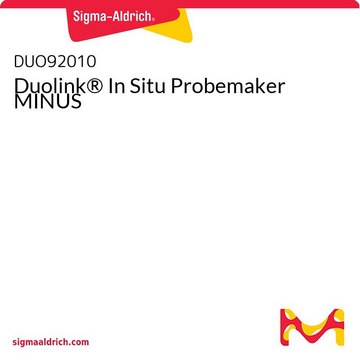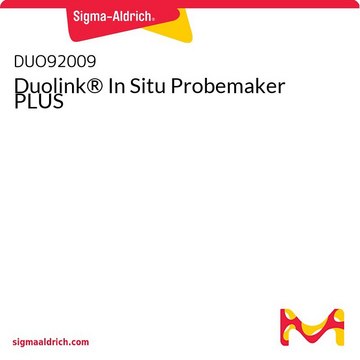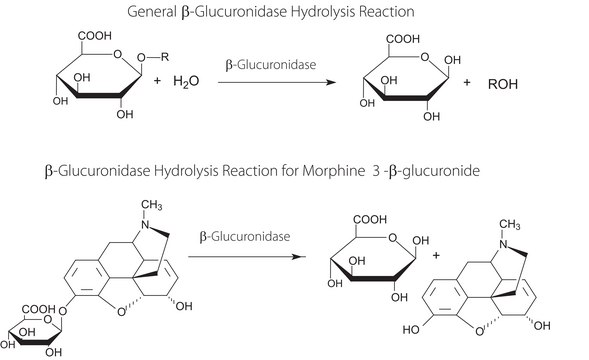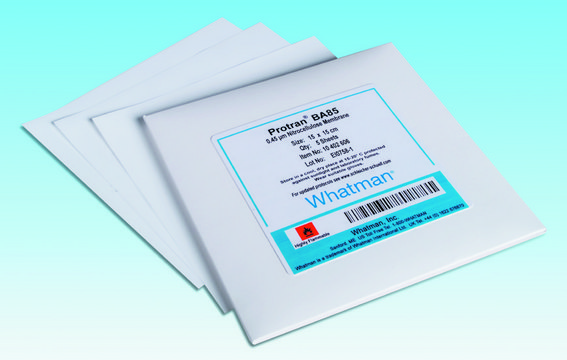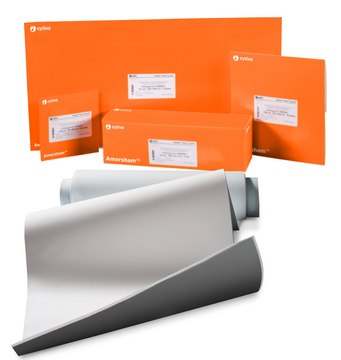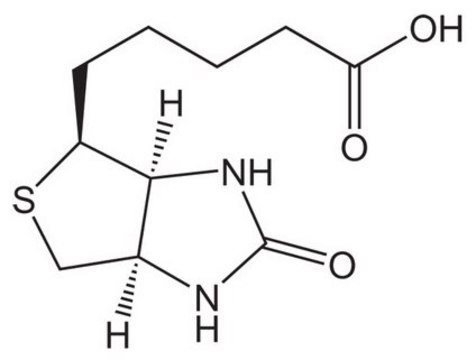推荐产品
特异性
Clone H11.H3 is a mouse monoclonal antibody that detects HPV11. It targets an epitope within the Major capsid protein L1.
免疫原
Intact HPV-11 virions obtained from morphologically transformed human foreskin xenografts grown subrenally in athymic mice.
应用
Quality Control Testing
Isotype testing: Identity Confirmation by Isotyping Test.
Isotyping Analysis: The identity of this monoclonal antibody is confirmed by isotyping test to be mouse IgG2b, kappa.
Tested Applications
Enzyme Immunoassay Analysis: A representative lot of this antibody detected HPV11 protein in ELISA application.
Neutralizing: A representative lot of this antibody neutralized HPV11 in neutralizing application (Christensen, N.D., et al. (1994). Virology. 205(1):329-35; Christensen, N.D., et al. (1996). Virology. 224(2):477-86).
ELISA Analysis: A representative lot of this antibody detected HPV11 protein in ELISA application (Christensen, N.D., et al. (1990). J Virol. 64(11):5678-81; Christensen, N.D., et al. (1994). Virology. 205(1):329-35 ; Christensen, N.D., et al. (1996). Virology. 224(2):477-86; Panicker, G., et al. (2021). J Immunol Methods. 498:113136; Jerajani, K., et al. (2022). J Pharm Sci. 111(11):2983-2997).
Note: Actual optimal working dilutions must be determined by end user as specimens, and experimental conditions may vary with the end user.
Isotype testing: Identity Confirmation by Isotyping Test.
Isotyping Analysis: The identity of this monoclonal antibody is confirmed by isotyping test to be mouse IgG2b, kappa.
Tested Applications
Enzyme Immunoassay Analysis: A representative lot of this antibody detected HPV11 protein in ELISA application.
Neutralizing: A representative lot of this antibody neutralized HPV11 in neutralizing application (Christensen, N.D., et al. (1994). Virology. 205(1):329-35; Christensen, N.D., et al. (1996). Virology. 224(2):477-86).
ELISA Analysis: A representative lot of this antibody detected HPV11 protein in ELISA application (Christensen, N.D., et al. (1990). J Virol. 64(11):5678-81; Christensen, N.D., et al. (1994). Virology. 205(1):329-35 ; Christensen, N.D., et al. (1996). Virology. 224(2):477-86; Panicker, G., et al. (2021). J Immunol Methods. 498:113136; Jerajani, K., et al. (2022). J Pharm Sci. 111(11):2983-2997).
Note: Actual optimal working dilutions must be determined by end user as specimens, and experimental conditions may vary with the end user.
目标描述
Major capsid protein L1 (UniProt: P04012) is encoded by the L1 gene in Human papillomavirus 11. The Major Capsid Protein L1 of Human papillomavirus is the primary structural protein responsible for the formation of the viral capsid, that encapsulates the genomic DNA together with Minor Capsid Protein L2. The viral capsid is composed of 360 copies of the L1 protein forming 72 pentamers, that assemble into the icosahedral capsid structure, while the L2 protein localizes along the inner surface of the virion and plays a role in capsid stabilization through interaction with the Major Capsid Protein L1. The L1 protein facilitates the attachment of the virus to the host cell by interacting with heparan sulfate proteoglycans on the cell surface, a critical step for infection. Recombinantly expressed Major Capsid Protein L1 can spontaneously assemble into Virus Like-Particles (VLPs) and were used for the development of neutralizing antibodies that show high degree of Human papillomavirus type-specificity. Based on their oncogenic potential, Human papillomaviruses (HPVs) can be classified as low-risk HPV types, (e.g.: HPV6 and HPV11, the most common serotypes) which do not cause cancer but can lead to skin and genital warts, and high-risk HPV types (e.g.: HPV 16, 18, 31, 33, 35, 45, 52, 58), that are responsible for HPV related cancers. Vaccines targeting the L1 protein, have been developed and are effective in preventing infection with the most oncogenic HPV types by inducing a robust antibody response. (Ref.: Hareza, D. A., (2022) Int. J. Mol. Sci., 23, 1818.; Christensen, N.D., et al. (1990). J Virol. 64:11, 5678-81; Christensen, N.D., et al. (1996). Virology. 224(2):477-86; Brown, M.J., et al. (2014). Clin Vaccine Immunol. 21:4, 587-93)
外形
Purified mouse monoclonal antibody IgG2b in PBS without preservatives.
重悬
1.0 mg/mL. Please refer to guidance on suggested starting dilutions and/or titers per application and sample type.
储存及稳定性
Store at -10°C to -25°C. Handling Recommendations: Upon receipt and prior to removing the cap, centrifuge the vial and gently mix the solution. Aliquot into microcentrifuge tubes and store at -20°C. Avoid repeated freeze/thaw cycles, which may damage IgG and affect product performance.
其他说明
Concentration: Please refer to the Certificate of Analysis for the lot-specific concentration.
免责声明
Unless otherwise stated in our catalog or other company documentation accompanying the product(s), our products are intended for research use only and are not to be used for any other purpose, which includes but is not limited to, unauthorized commercial uses, in vitro diagnostic uses, ex vivo or in vivo therapeutic uses or any type of consumption or application to humans or animals.
未找到合适的产品?
试试我们的产品选型工具.
储存分类代码
12 - Non Combustible Liquids
WGK
WGK 2
闪点(°F)
Not applicable
闪点(°C)
Not applicable
法规信息
新产品
我们的科学家团队拥有各种研究领域经验,包括生命科学、材料科学、化学合成、色谱、分析及许多其他领域.
联系技术服务部门
